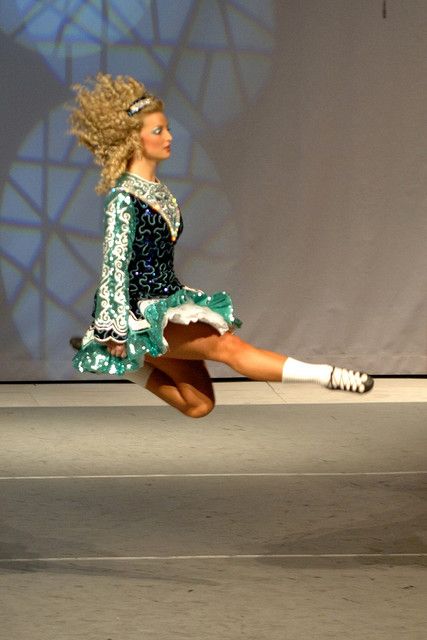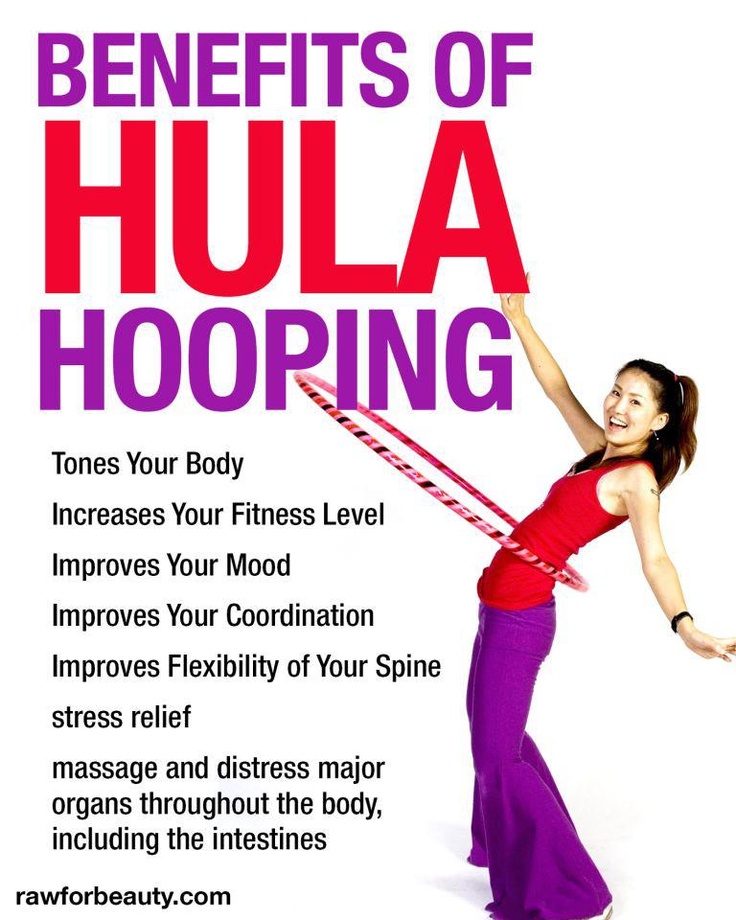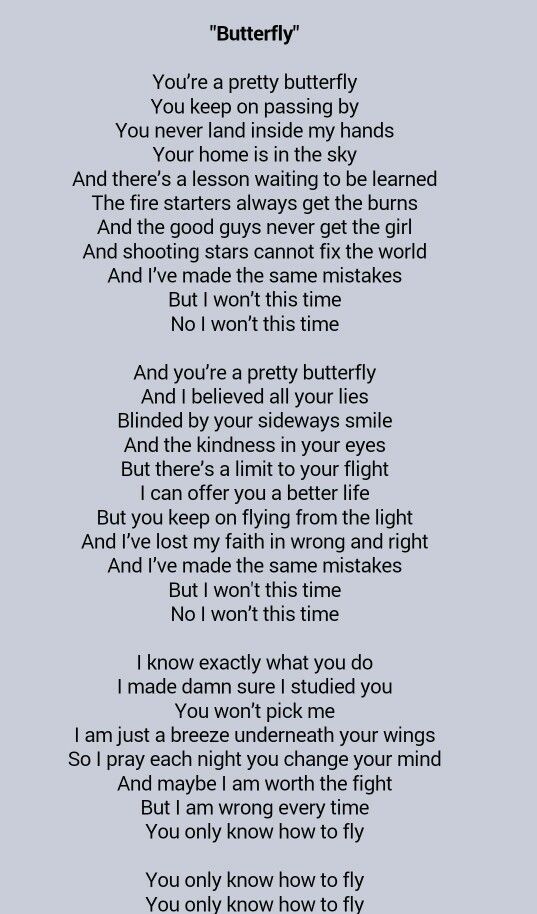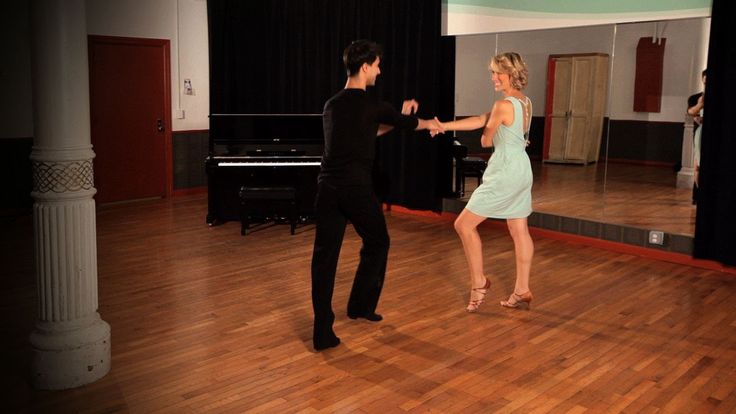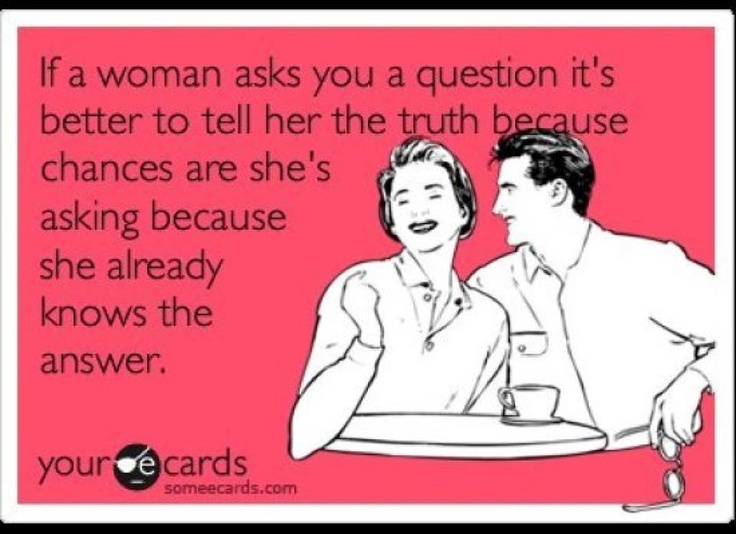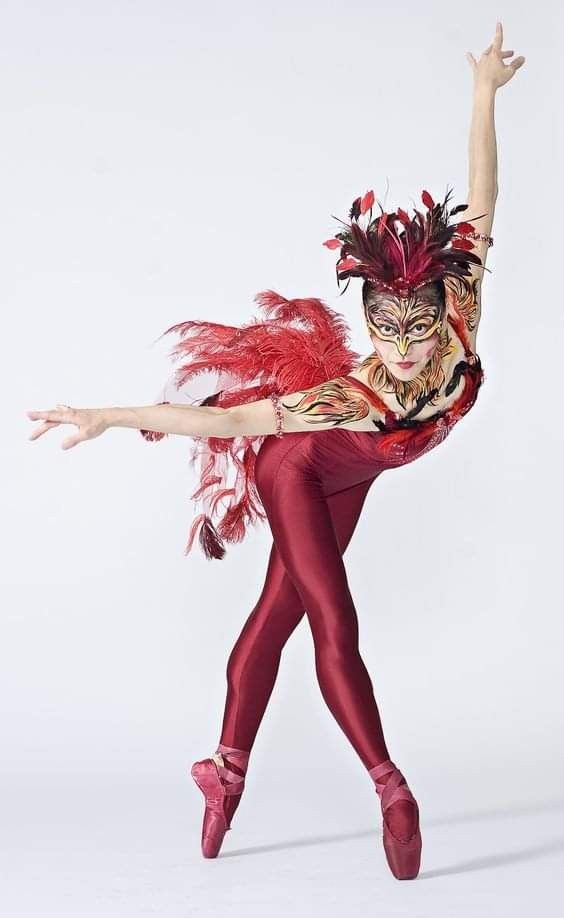How to do a birdie in irish dance
Irish Dance: History, Music, Styles, Steps, Dresses, Shoes
Irish dance or Irish dancing is traditional Gaelic or Celtic dance forms that originated in Ireland. It can be performed as a solo or in groups of up to twenty or more trained dancers. In Ireland, Irish dance is part of social dancing or may be for formal performances and competitions.
It is performed traditionally with intricate foot work and is most known for the dancers performing with a stiff upper body. Unlike other dance forms, Irish dancers do not move their arms or hands so that footwork is accented.
CONTENT
The History of Irish Dance
The history of Ireland is also the history of Irish Dance. The actual dates of its origin has never been determined specifically. However, Irish history is steeped in Druidic, Celtic and other religious history which affected the origins of Irish dance. For example, processionals in Druidic and Celtic religious practices required precision movement as do Irish reels and jigs.
The Celts are a 2,000 year old civilization that brought with them their own folk dances. Many of their dances were comprised of circular formations around sacred trees or they consisted of certain patterns performed by males and females in a religious rite.
If there has been any influence in Irish Dance, it may have been the Quadrille. Ireland has been a country of many travelers who brought with them various continental dance styles. The Quadrille was one of these styles that impacted Irish dance.
The Quadrille was popular across Europe in the 18th and 19th centuries when royalty held balls and cotillions. Although, the Quadrille was popular toward the end of the 18th century and spread to England and Ireland around the early 19th century.
A Quadrille is a square dance performed by four couples. It contains five choreographic figures.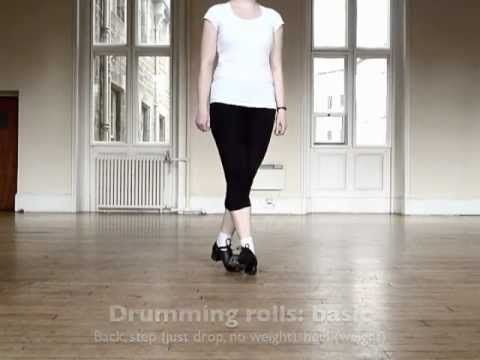 Each of these figures is a complete dance sequence of itself. Thus, it is easy to see how Irish reels became a prominent part of Irish dance.
Each of these figures is a complete dance sequence of itself. Thus, it is easy to see how Irish reels became a prominent part of Irish dance.
Musical instruments like the Irish Bodhran (drum), fiddle, concertina, accordian, Uiliean pipes, Celtic harp, tin whistles and banjo form the background of Irish dance music
Irish Dance Costumes, Dresses and Shoes
In the early days of Irish dance the dance costumes for females were basically ankle length dresses or blouses and skirts. For male dancers, costumes might have consisted of a shirt with a kilt in the Irish clan plaid or it may have been a long coat, shirt, vest and briques (calf length pants) with leggings.
Modern Irish dancers and dancers performing in traditional Celtic dance wear several different costume styles. For Traditional Celtic dance, female dancers wear blouses and long skirts while the male dancers perform with traditional shirt and kilt.
For Traditional Celtic dance, female dancers wear blouses and long skirts while the male dancers perform with traditional shirt and kilt.
Modern Irish female dancers perform in beautiful short dresses in bright colors, mostly always with their arms fully covered. Modern Irish male dancers perform in trousers and a shirt with a colorful sash tied at the waist.
Shoes for male Irish dancers depends on the type of dance they are performing. For Flat Down step dancing, shoes have metal cleats on the toes and heels. For Ballet Up dance, shoes for males have soft soles.
Female dancers wear black leather "Ghillies" that have soft soles for flexibility for Ballet Up steps. The soft leather of Ghillies help Irish dancers perform dance steps either on the balls of the feet or on tips of their toes.
Female Irish dancers wear two basic types of shoes.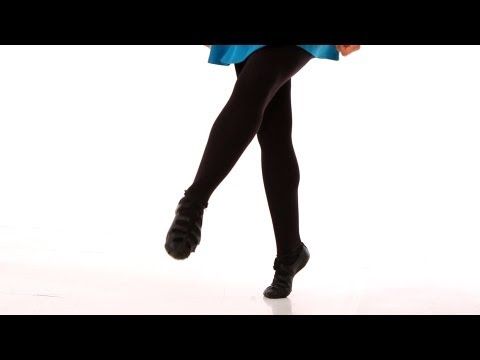 For Flat Down step dances, shoes are an oxford style with a thick heel with metal cleat attached to the full heel and a thick frontal sole that also has a metal cleat attached. The oxford is usually black leather, has laces and a leather strap to secure the shoe to the foot.
For Flat Down step dances, shoes are an oxford style with a thick heel with metal cleat attached to the full heel and a thick frontal sole that also has a metal cleat attached. The oxford is usually black leather, has laces and a leather strap to secure the shoe to the foot.
Irish Dance Styles & Types
In total, there are six Irish dance styles. However, it is equally important to note that within each of the six Irish dance styles, there are basically only two dance style techniques, these are known as Ballet Up and Flat Down. These describe how Irish dancers use their feet in the six styles.
Ballet up describes a balletic style where toes are pointed and steps are performed high on the balls of the feet or on tips of the toes. Body weight is lifted upward from the floor.
Flat Down describes a technique that relies more on the use of the heels in a flat, gliding motion. Body weight sinks downward into the floor to emphasize the sound of the metal cleats.
Body weight sinks downward into the floor to emphasize the sound of the metal cleats.
The six Irish dance styles include:
- Traditional Irish Step Dancing - only the legs and feet move in flat down technique
- Modern Irish Step Dancing - full body movement with ballet up technique
- Irish Set Dancing - with Flat Down technique
- Irish Ceili Dancing - with Ballet Up technique
- Irish Sean Nos Dancing - with Flat Down technique
- Irish Two Hand Dancing - with Flat Down technique
Traditional Irish Step
Traditional Irish Step dancing is performed by male and female dancers in long lines, circles, squares or as partnered reels. Traditional Iris Step Dancing consists of dances set to traditional Irish music with a fast tempo that dancers are required to perform sets of steps to.
For example, two groups of dancers face opposite each other and shuffle, hop, jump, tap and stamp to the music as they more toward each other. Dancers then move between the dancers of the opposite line and then back to their original position. This is often referred to as a "competition" line dance.
Dancers then move between the dancers of the opposite line and then back to their original position. This is often referred to as a "competition" line dance.
Modern Irish Step Dancing
Modern Irish Step dancing has female dancers performing ballet up dance movements like leg swings, hopping and jumping or sashaying to the music. The female dancers perform in soft ghillies while the male dancers are heard tapping in Oxford tap shoes to the music Modern Irish Step Dancing
Modern Irish Step dancing has female dancers performing ballet up dance movements like leg swings, hopping and jumping or sashaying to the music. The female dancers perform in soft ghillies while the male dancers are heard tapping in Oxford tap shoes to the music.
Irish Set Dancing
Irish Set Dancing, as its name implies consists of dances performed in "sets. " For example, a performance of Irish Set Dances may be part of a whole choreographed dance performance that is broken up into several separate parts. The set usually requires dancing in couples in four sets.
" For example, a performance of Irish Set Dances may be part of a whole choreographed dance performance that is broken up into several separate parts. The set usually requires dancing in couples in four sets.
The Set Dance begins with all four couples dancing to the same choreography. This is followed by each couple performing the same sets as individual couples.
Irish Ceili Dancing
Irish Ceili (pronounced "kay-lee) Dancing is a very traditional dance form. It originated in the 1500's and is always performed to traditional Irish music. The Ceili Dances consist of quadrilles, reels, jigs and long or round dances. These were the most native Irish traditional folk dances.
Irish Sean Nos Dancing
Irish Sean Nos Dancing is one of the oldest of the traditional Irish dance styles. It is the only one performed as a solo. It differs from other Irish dances in that it allows free movement of the arms and it is flat down with the heavy weight on the accented beat of the music.
It is the only one performed as a solo. It differs from other Irish dances in that it allows free movement of the arms and it is flat down with the heavy weight on the accented beat of the music.
Sean Nos Dancing is the only Irish dance that also allows the solo dancer to improvise the choreography simultaneously as the dance is performed. The taps consist of shuffles and brushes as the dancer moves across the floor.
Irish Two Hand Dancing
This style of Irish Dance was a predominant part of Irish socializing. It is performed much like Irish Set Dancing with the exception that is it danced to polkas, Irish hornpipes, waltzes and jigs. Like the Irish Set Dancing, it is performed by couples with specific choreographic dance patterns, although in Irish Two Hand Dancing the patterns are repeated.
In Irish Two Hand Dancing couples dance in a relaxed style while they tap their feet in shuffling, hopping and spinning motion.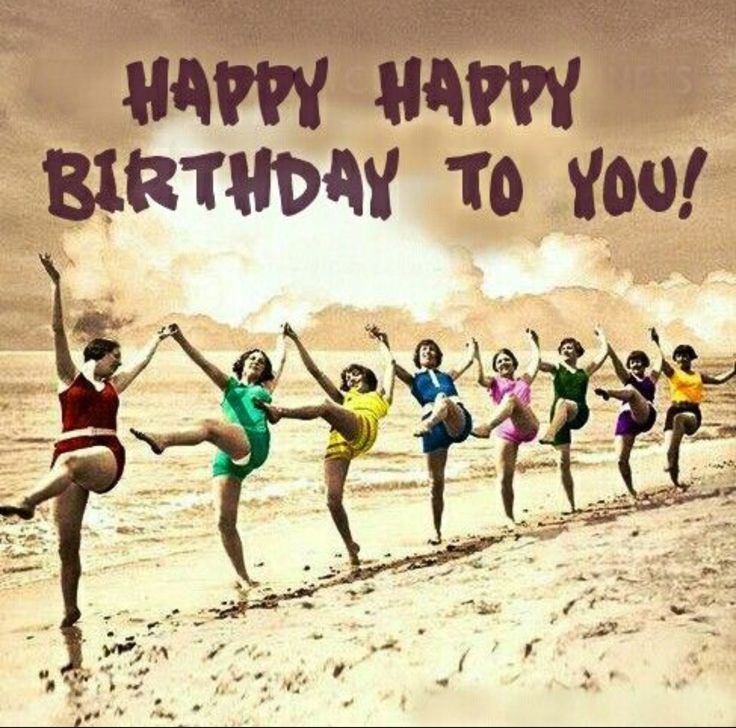 By all appearances, when Irish Two Hand Dancing is performed on a large dance floor, the couples seem to be gliding along as they dance.
By all appearances, when Irish Two Hand Dancing is performed on a large dance floor, the couples seem to be gliding along as they dance.
Basic Irish Dance Steps
Ballet Up styles of Irish dance rely on several uniformly performed steps. The first comes from the ballet step, "chasse," which means to "chase." In this step the Irish dancer steps with the right foot while the left foot "chases" the right in three counts. This is often called the "1-2-3."
Another step borrowed from Ballet is the "cabriole" which is to leap into the air while the left calf beats under the right calf that is extended forward in the air. There are several other steps that require the dancer to perform full or half turns.
In Flat Down Irish dance steps, the dancer's foot strikes the floor in a twisting shuffle of the right foot while hopping into the air with the left foot.
There are also combinations of Irish dance steps that include the "1-2-3", shuffle, stamping the whole foot and tapping one toe behind the other foot that holds body weight.
Although traditional Irish dance limits movement of the arms, today's modern Irish dancers are seen starting a dance routine with their hands on their hips and using certain movements of the arms that coordinate with music for interpretation of choreography.
Irish Dancers are as young as pre-school age to adult. There are numerous Irish Dance schools that teach traditional and modern Irish dance styles in the U.S. and Europe. The syllabus for Irish Dance is less complex than ballet, although several Irish steps originate from ballet.
Irish Dance is a combination of ballet and tap dancing. Although, it can be said that tap dancing originated from Irish flat down dance technique.
Unlike ballet, however, Ballet Up dance steps require dancers to place full weight on their toes in ghillies that are not blocked as ballet pointe shoes are.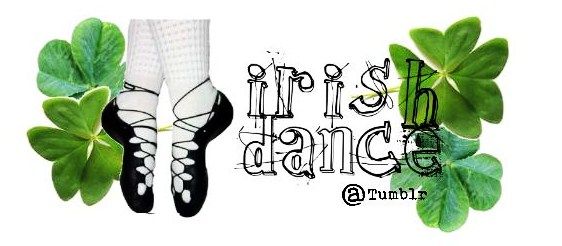
In Flat down dance steps, the shoe is more flexible across the front of the shoe than a traditional tap dance shoe. This enables the Irish dancers to perform shuffling steps with more speed.
Irish Dance Today
The first international reintroduction to Irish Dance performances was with the performance of "Riverdance", composed by Bill Whelan.
The first performance was in 1995 in Dublin. It starred the now famous Irish Dancer and Irish Dance choreographer, Michael Flatley.
Although, it predominantly features Irish step dancing, "Riverdance" has a Baroque style that incorporates other dance styles like flamenco and a Russian dervish. The end result for dance experts is that "Riverdance" provides insight into how dances are linked in technique and styles.
It has since been performed as a touring Irish Dance show in New York City and at the Vatican for Pope Francis.
In addition to "Riverdance," Michael Flatley choreographed his first full length Irish Dance performance in which he starred, in "Lord of the Dance.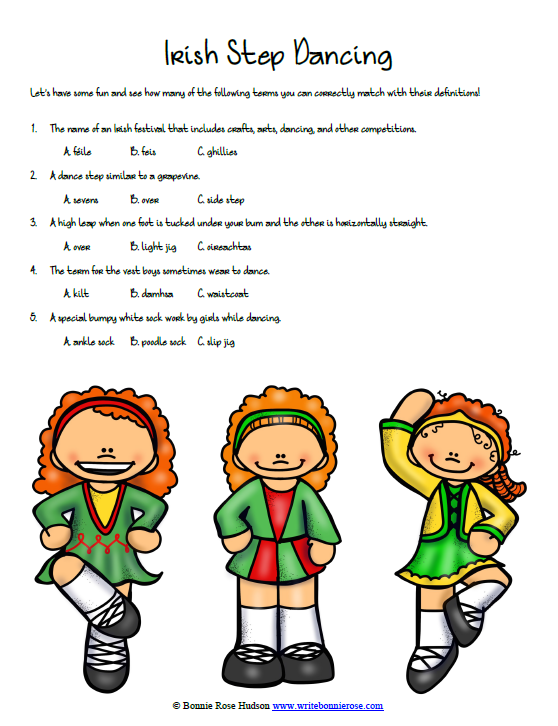 " This was followed by "Feet of Flames" and "Celtic Tiger Live." These are modern Irish dance shows that include Ballet Up and Flat Down Irish dance techniques.
" This was followed by "Feet of Flames" and "Celtic Tiger Live." These are modern Irish dance shows that include Ballet Up and Flat Down Irish dance techniques.
In "Feet of Flames," Michael Flatley performs a lengthy series of movements that seem to defy gravity, all while maintaining balance and musical timing.
However, in the Flatley shows, he included traditional Irish songs in the Gaelic language as well as actual story lines for each of his Irish dance shows. For example, in Lord of the Dance, the story line has both a romantic and a fairy tale plot that includes a whimsical fairy piper.
As a result of the addition of a Gaelic singer and two Irish talented Irish fiddlers in these shows, similar Irish entertainment emerged from these Irish performances such as "Celtic Woman" and "Irish Tenors."
All of these Irish performances include some of the most extraordinary dance talent and shows the extreme skill needed to maintain Irish dance choreography as well as a semblance of acting talent.
There are also Irish Dance Championships that encourage students of Irish Dance to take part in competitions for awards for their dance techniques, skills and choreography.
Conclusion
There is no doubt Irish Dance captures the attention of audiences wherever it is performed. There are also many Irish societies and organizations that help promote Irish dance performances like the Ancient Order of Hibernians, Milwaukee St. Patrick's Day Parade, Friendly Sons of the Shillelagh and the World Irish Dance Organization. Today, Irish Dance is seen in the Thanksgiving Day Macy's Parade as well as the St. Patrick's Day parade in New York City and Chicago.
TIPS FOR DANCERS - Irish Dancing Magazine
By Gina Pongetti Angeletti, Physical Therapist, Performing Arts Medicine Specialist
Lines in the air and on the ground are what often separates a mediocre performance from a World champion in Irish Dance. From hip to toe, the straighter the lines, the better. An illusion of height while weight bearing such as in toe stands and while moving with birdies or trebles are great examples of how the thigh-shin-foot line can express finesse’. The illusion of leg length and height with free leg work such as scissors is yet another example of performance mastery.
From hip to toe, the straighter the lines, the better. An illusion of height while weight bearing such as in toe stands and while moving with birdies or trebles are great examples of how the thigh-shin-foot line can express finesse’. The illusion of leg length and height with free leg work such as scissors is yet another example of performance mastery.
Rising high up on your toes, as well as pointing your toes in the air, are a result of four things: how strong the muscles are to get the foot there in the foot itself, the strength of the muscles that co-contract such as quads, glutes and hamstrings, how flexible the ligaments are to allow the bones to move, and flexibility of the tissues to allow the ankle to attain the position! With a deficit in any of these areas, it becomes harder and harder to reach that last 10% of perfection!
Working daily in warm up as well as in class is important, but how you work contributes equally to success. Using the right muscles in groups will train the brain that the pattern “goes together”, such as quads to tighten the leg as well as calf to point the ankle and toe muscles to point the foot.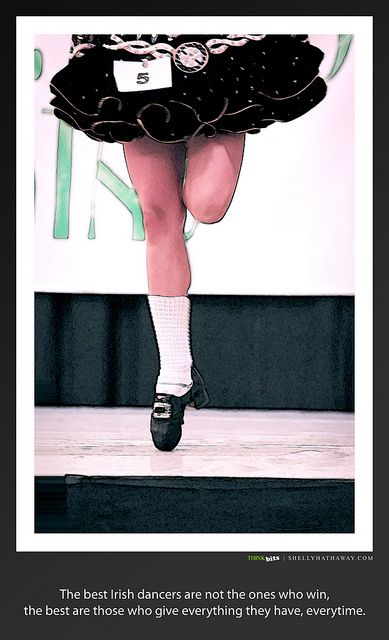 Or when standing, that the glutes stabilize the hip, hamstring pull back the leg to vertical, the adductors pull the legs together (such as in toe stand or roll up) and then the quads and calves function as previous.
Or when standing, that the glutes stabilize the hip, hamstring pull back the leg to vertical, the adductors pull the legs together (such as in toe stand or roll up) and then the quads and calves function as previous.
Unfortunately, sometimes we sacrifice quality for quantity. Kicking higher is great, but with a bent knee, then teaches the wrong neuro pattern. Getting on “top” of your toes more may be great, but if you need to bend your knees and buckle at your hips to get there, it is not worth it. With pushing too hard, one can create achilles tendon issues if using the calf muscles too hard to lift the heel, when in reality, it may be ankle front flexibility that is the issue, for example.
Teachers need to be equally as concerned about preparation exercises as they are about creating positive group muscle patterns. Dancers need to constantly check posture and movement quality by videotaping and replaying from multiple different angels, slowing down video to watch exact positioning, and even getting assessed by a physical therapist for deficits to work on with a great plan!
Check out these suggested exercises to do regularly to create good patterning and the best possible foot position!
Gina Pongetti, MPT, MA, CSC, ART-CERT.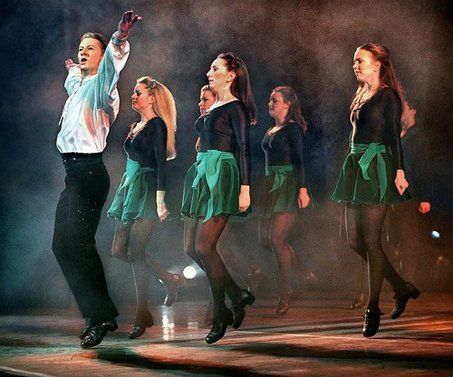 |
As a former dancer and gymnast of 14 years, Gina has dedicated her career to the injury prevention and health promotion of the Performing Arts. Involved with National, Collegiate and Olympic gymnasts since 2003, much of her professional focus is on injury prevention and treatment. She is an accomplished adult triathlete herself: Gina raced in the Ironman World Championships in Kona, HI in October of 2006. She and her staff treat onsite weekly at dance studios, theaters and gymnastics gyms. She is the provider of choice for many of the nation’s and world’s top touring performing artists, actors and an increasing number of Irish Dancers. In addition, Gina takes care of many of America’s top gymnasts, including local Elites, National Team members, World Team competitors, NCAA Champions, Olympians, and Pan American Champions. She is a world renowned speaker on gymnastics, dance and performance injury prevention and health/wellness. |
TO READ MORE TIPS FOR DANCERS, ORDER A SUBSCRIPTION TO IRISH DANCING MAGAZINE HERE!
Click here to return to our homepage
Dance Irish dances in Vladimir
Reels, jigs, hornpipes are national melodies, to which the well-known Irish dances are most often performed. The occupation is difficult and requires good physical preparation. How to learn it and where to start, we learned from the teacher of Irish dances in Vladimir - Natalia Loginova.
The occupation is difficult and requires good physical preparation. How to learn it and where to start, we learned from the teacher of Irish dances in Vladimir - Natalia Loginova.
One for the whole of Vladimir and Suzdal
The first time I learned about Irish dancing was at the Historical Reenactment Club, which had a historical dance club and a small section dedicated to Irish dancing. We studied everything on our own, because the dances were not in full and in the traditional form, from a technical point of view there were some omissions. After moving to Moscow, I decided to go to an Irish dance school there, and then, due to personal circumstances, I moved to Suzdal. Now I have my own school - “Solas”. And I am the only teacher of Irish dances in the whole of Vladimir and Suzdal.
Only legs work
We have children who have been walking since the age of three. Until the age of seven, they have choreographic training and the program is more playful.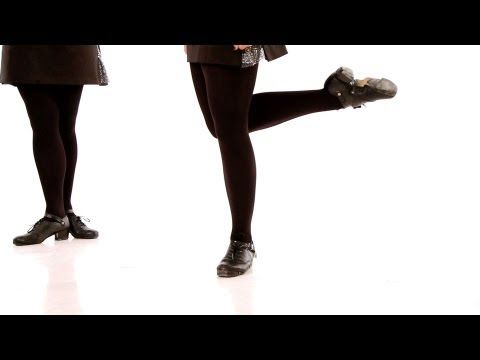 After it, they are already prepared for any dance, especially classical, because the position of the legs is developed.
After it, they are already prepared for any dance, especially classical, because the position of the legs is developed.
There are older kids, for example, from the age of 13 you can already go to an adult group. Both teenagers and young people 20-40 years old are engaged. We teach almost all types of Irish dance, for example, solo dance (popularly called Irish ballet), keili (group dances for 2 or more people), and many others.
In the Irish dance, the arms are lowered, the body is not allowed to move, only the legs work. Naturally, if these are group dances, then handholds are allowed, but they are also regulated. Of course, you can add something of your own, but the back always remains straight.
Irish dancing more than ballet
We do so that the sweat flows! But it should be so when it comes to dancing or aerobic exercise. For those who want to lose weight - ideal, and the muscles will be in good shape, and a few kg will go away by themselves.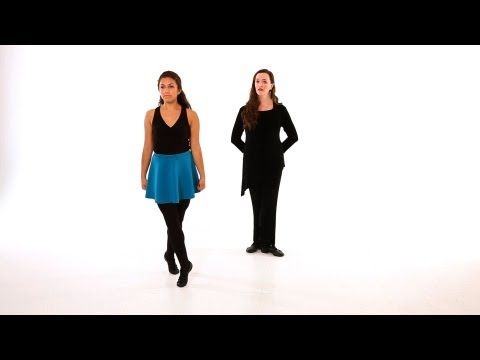 They even conducted studies on the degree of load: it turned out that Irish dances give more than ballet. If in ballet the movements are sometimes smooth and calm, then we have constant jumps and all the time on our toes. The lesson lasts an hour and a half, for the kids - an hour. An hour and a half includes: warm-up, work on new movements, dances themselves, plus various physical exercises. I think this is necessary because the muscles that are involved in the dance need to be pumped up in order to facilitate the efforts of the dancer.
They even conducted studies on the degree of load: it turned out that Irish dances give more than ballet. If in ballet the movements are sometimes smooth and calm, then we have constant jumps and all the time on our toes. The lesson lasts an hour and a half, for the kids - an hour. An hour and a half includes: warm-up, work on new movements, dances themselves, plus various physical exercises. I think this is necessary because the muscles that are involved in the dance need to be pumped up in order to facilitate the efforts of the dancer.
Motion memory
Now there are many children who have flat feet or improperly developed legs - knees together, heels apart. We straighten it out, do certain exercises, and the legs are aligned. There are children who have different lengths of legs, someone has weak muscles with ligaments, and they need to be strengthened. When a student comes to me, we start with the smallest, and then we give loads a little bit. A person does not particularly notice this, and the muscles of the legs are strengthened, relief appears, the back and abs are strengthened. Even the hands become stronger: in group dances, you need to lead your partner and hold on tight.
A person does not particularly notice this, and the muscles of the legs are strengthened, relief appears, the back and abs are strengthened. Even the hands become stronger: in group dances, you need to lead your partner and hold on tight.
But the main thing is that choreographic memory develops in any dance. This is movement memory, it is very important. Unfortunately, in life we practically do not use it. When you make movements on one leg, and then you need to do the same mirror on the other leg, problems begin, oddly enough, brains begin to boil. There are those who come and quickly drop out of class. But there are few of them, because these are mainly people who, in general, quickly give up everything: the slightest difficulties begin - and that's it. In fact, it gets easier and easier every time.
Celtic dance
We have access to competitions up to world championships. We attend festivals and competitions in Moscow.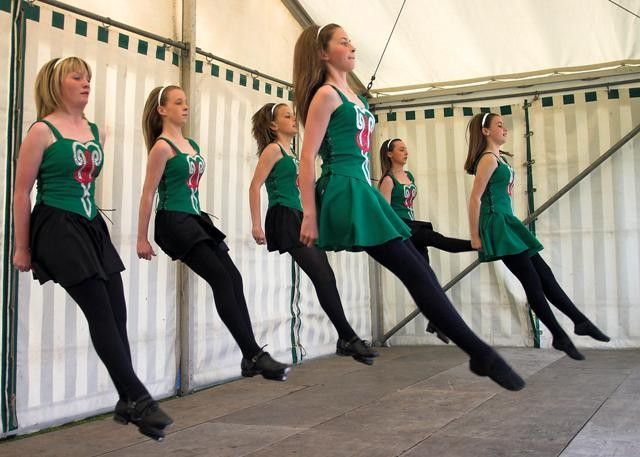 On September 24, 2016, our school held international competitions in the UEC. We are active in the school. We celebrate national holidays such as Samhain, a Celtic holiday that is the precursor to Halloween. I staged an Irish dance for the play "The Three Little Pigs" at the Vladimir Puppet Theatre. It turned out to be a very innovative and unusual production, imbued with the spirit of Great Britain. Also recently I organized a concert of the folk group "Spiritual seasons", staged a performance, and we all danced our dances together just for fun. The whole school is constantly preparing concert numbers. Now we are planning a performance, which will include not only Irish choreography, but also traditional music and songs of Ireland. But I don’t forget about myself either, I’m getting ready to go to the Irish Dance World Championship in a year!
On September 24, 2016, our school held international competitions in the UEC. We are active in the school. We celebrate national holidays such as Samhain, a Celtic holiday that is the precursor to Halloween. I staged an Irish dance for the play "The Three Little Pigs" at the Vladimir Puppet Theatre. It turned out to be a very innovative and unusual production, imbued with the spirit of Great Britain. Also recently I organized a concert of the folk group "Spiritual seasons", staged a performance, and we all danced our dances together just for fun. The whole school is constantly preparing concert numbers. Now we are planning a performance, which will include not only Irish choreography, but also traditional music and songs of Ireland. But I don’t forget about myself either, I’m getting ready to go to the Irish Dance World Championship in a year!
Irish dancing is a worthy sport for both children and adults. We wish success to Natalia and great development of Irish dances in Vladimir.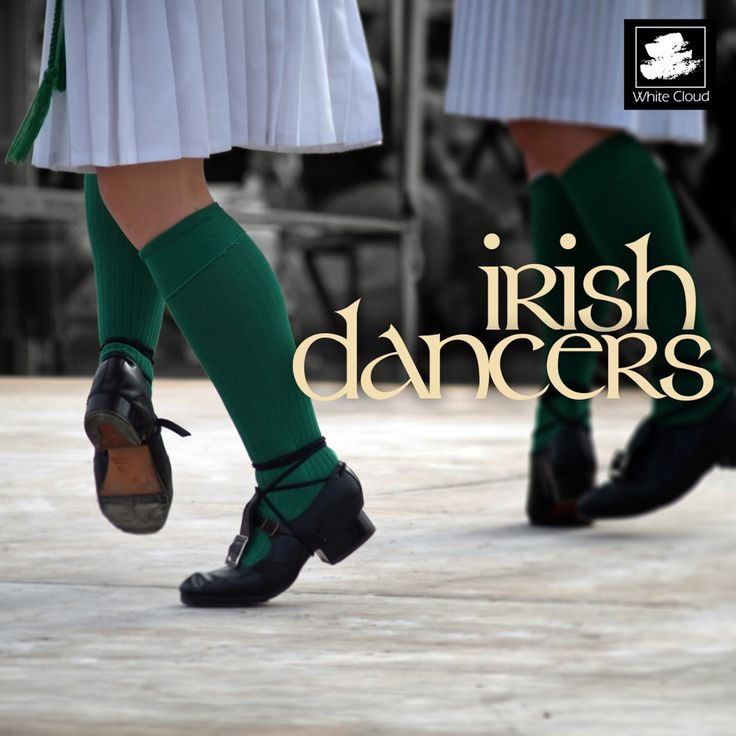
Dance, dance wherever you may be, or about the influence of Irish dance on personality. Filippovich Natalya Yuryevna Moscow
In order to understand what personality traits can develop in a person dancing Irish or Scottish dances, one must turn to the history of these peoples. The Irish, as well as the Scots, had a hard time in different eras - it is enough to remember only the policy of the British towards them. They tried to eradicate the national culture and language, it even went so far that the Irish were forbidden to dance their folk dances! Of course, being very freedom-loving, the Irish people did not want to obey these rules, and continued to dance. There is even a legend according to which the Irish developed such a style of tap when from the outside it seemed that people were just walking, but in fact they were dancing.
The story of the oppression of the Irish people was the subject of Michael Flatley's (1) dance performance "Celtic Tiger". As Flatley himself says, “The tiger is a symbol of awakening, a symbol of magic and the struggle for freedom .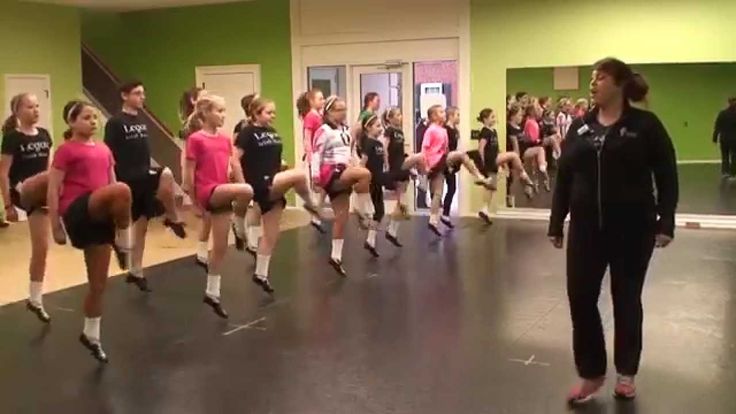 .. The “Celtic Tiger” is often referred to in financial terms as Ireland's incredible economic success over the past decade. But I see something much more in these words - I see in this the heart, soul and spirit of the Irish people. When they got to America, at first they were treated as slaves, but they rose up again to become the John F. Kennedy of the New World.” This quote characterizes the Irish nation well.
.. The “Celtic Tiger” is often referred to in financial terms as Ireland's incredible economic success over the past decade. But I see something much more in these words - I see in this the heart, soul and spirit of the Irish people. When they got to America, at first they were treated as slaves, but they rose up again to become the John F. Kennedy of the New World.” This quote characterizes the Irish nation well.
Speaking of the Irish, one can also recall other character traits. Once, on the channel "Culture" a program was shown in which it was mentioned that the Irish are very stubborn people. To the point that a comic recommendation was given: in order for an Irishman to do something, ask him to do the opposite. Everything experienced in the course of history did not break the descendants of the Celts, who continue to stubbornly fight for freedom and honor their traditions and culture.
And if we proceed from the fact that by performing specific movements, a person acquires certain character traits (those who practice yoga are well aware of this), then doing Irish dance, a person can "try on" freedom, pride, firmness of character and perseverance .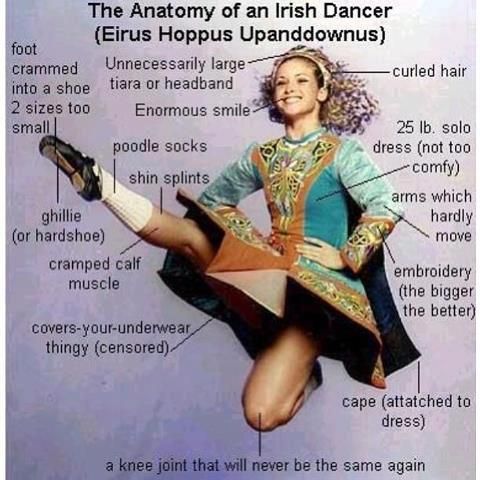 And as many thinkers have noted, if the mask is worn for too long, it can “grow” and what it personifies will become the essence of the person who so thoughtlessly (or intentionally) tried it on.
And as many thinkers have noted, if the mask is worn for too long, it can “grow” and what it personifies will become the essence of the person who so thoughtlessly (or intentionally) tried it on.
The slide element is very indicative ( http://celticdance.narod.ru/lession4.htm ).
If at the time of execution you do not keep your back straight and carry out the movement with dignity - no matter how easily and clearly you do this element - the impression will be blurred. An important role here is played not only by the psychological attitude during the performance, but also by a perfectly straightened back and fixation of the body. There is a neat clarity and activity in the character of the movement, from the side the element may look as if the dancer, proudly carrying the body, moves diagonally forward with a sliding movement, as if emphasizing his independence and love of freedom. Many elements are imbued with similar emotions - crossover - the position of the knees characteristic of Irish dances (located side by side, if possible, without a gap between them or covering one another), greatly contributes to the creation of such an image.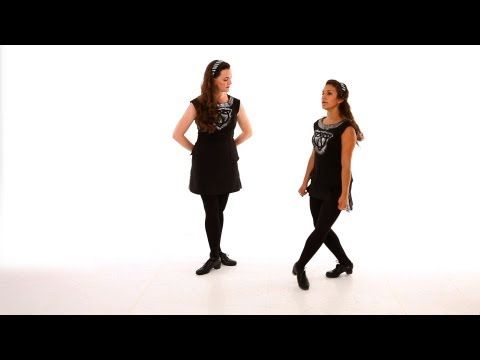 And the famous Irish-Scottish turnout of the feet only complements it.
And the famous Irish-Scottish turnout of the feet only complements it.
Earlier we said that theoretically, Irish and Scottish dances should develop strength of character and perseverance. A clear proof of this is the technique of performing most of the elements, primarily solo dances. Try to make a rock movement - rocking from side to side on half toes is very difficult! It takes a long time to learn this, and in order to perform the bird element ( http://celticdance.narod.ru/lession9.htm ) some have to train to the point of exhaustion, trying to make the jump higher. When practicing solo Scottish and Irish dances, you have to pay increased attention to stretching (this is especially true for a number of Scottish elements). Irish dances are characterized by high "flight" jumps - you have to pump the press - again, in order to jump higher. It is necessary to strengthen many muscles and in connection with this, competent teachers, such as our compatriot, European champion in Irish dancing in 2006, Yulia Romashko, are sure to conduct a great warm-up.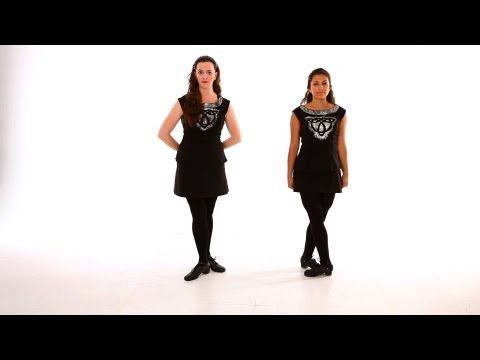 The basic step element - treble - needs to be worked out for a very long time before it is obtained quickly and technically, for some it takes years to complete this element. Only very patient people are able to withstand such loads and systematically force themselves to practice, so perseverance and stubbornness (in the good sense of the word) should always be inherent in those who are passionate about the dances discussed in this article.
The basic step element - treble - needs to be worked out for a very long time before it is obtained quickly and technically, for some it takes years to complete this element. Only very patient people are able to withstand such loads and systematically force themselves to practice, so perseverance and stubbornness (in the good sense of the word) should always be inherent in those who are passionate about the dances discussed in this article.
Clarity, accuracy and lightness are also necessary qualities if a person has them - it will be much easier for him to learn to dance Scottish and Irish dances. And with long and serious studies in this art, all the qualities listed above can automatically begin to be developed. Also, these dances (especially if we are not talking about sets, but about "solo" dances) do not tolerate negligence in performance. Therefore, people who are careless and accustomed to doing everything “bang-bang” usually have to learn to concentrate more on the elements they perform, in the process of training, clearly and accurately making movements and pausing between them.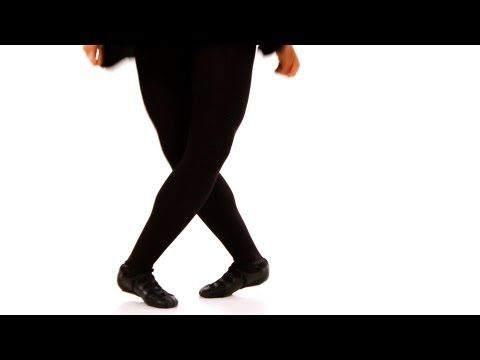 It is recommended to fix each movement in order to better focus and work on it. So Irish dance contributes to a thoughtful attitude to what is being done, and one might even say, the development of contemplation . Attention trains constantly, especially at the beginning of learning dances, because you need to remember about many nuances at the same time. For example, when performing Irish dances, the hands must be kept along the body, and there is a point of view according to which this requirement was introduced several centuries ago by dance teachers specifically to complicate the dance! Difficulty exists in the performance of fast dances - in order to maintain the pace, it is important to be able to breathe correctly, as Jean Butler notes (1).
It is recommended to fix each movement in order to better focus and work on it. So Irish dance contributes to a thoughtful attitude to what is being done, and one might even say, the development of contemplation . Attention trains constantly, especially at the beginning of learning dances, because you need to remember about many nuances at the same time. For example, when performing Irish dances, the hands must be kept along the body, and there is a point of view according to which this requirement was introduced several centuries ago by dance teachers specifically to complicate the dance! Difficulty exists in the performance of fast dances - in order to maintain the pace, it is important to be able to breathe correctly, as Jean Butler notes (1).
The permanently fixed position of the body seems to express restraint in feelings, but one can hardly speak of the absence of emotions: Irish and Scottish dances are very expressive and contain strong energy.
Aggressiveness is a quality that can only interfere with the performance of the dances we are considering. And, of course, Irish and Scottish dances do not develop this quality when properly performed. On the contrary, the need to step lightly (rather than thrashing with heels as if the dancers hammer nails with them) can affect a person quite beneficially. In combination with the smoothness of movements, all of the above can contribute to a more harmonious development of the personality. The above applies to traditional folk dance, both existing in an authentic form and put on a choreographic basis (Riverdance show, Lord of the Dance). The same can hardly be said for such contemporary influences as the modern in Dancing On Dangerous Ground, where you can see more abrupt broken movements.
And, of course, Irish and Scottish dances do not develop this quality when properly performed. On the contrary, the need to step lightly (rather than thrashing with heels as if the dancers hammer nails with them) can affect a person quite beneficially. In combination with the smoothness of movements, all of the above can contribute to a more harmonious development of the personality. The above applies to traditional folk dance, both existing in an authentic form and put on a choreographic basis (Riverdance show, Lord of the Dance). The same can hardly be said for such contemporary influences as the modern in Dancing On Dangerous Ground, where you can see more abrupt broken movements.
There is one more interesting moment. According to the author of the article, people who are truly passionate about the dances of the Irish and Scots are often indifferent or even frankly “do not respect” Latin American dances! Of course, statistics do not exist at the moment, but often this turns out to be the case! And if we try to analyze the similarities and differences between these dances, as well as the images they create, we can assume that they are some kind of antagonists.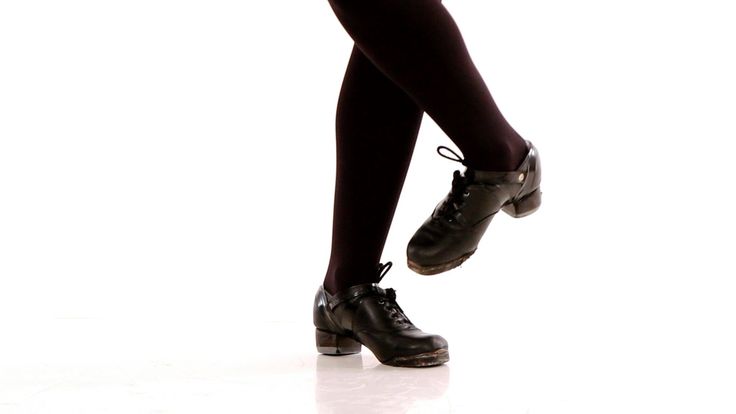
Of course, to perform any dance, you need to develop the ability to tune into the music, feel it, hear the rhythm, which requires a certain mental organization and the ability to perceive art. Here we come to the next point.
There is one important nuance, non-compliance with which can negate all of the above. The fact is that up to this point, the article considered the “ideal” case, when the student sets himself the goal of imbued with this particular culture, taking into account all its specifics. He listens attentively to Irish (or - Scottish, Breton, Welsh, etc. music) and expresses the heard images in motion. Of course, such dancers exist and it happens that they achieve amazing results in mastering the dance without the help of teachers. An example is the talented Russian Irish dancer Svetlana Kuznetsova. Once, having heard Irish music, Svetlana was able to recreate the character of the movements of Irish folk dances, without even seeing them before!
Alas, not everyone comes to dance classes, perceiving dance as a high art. Someone sets goals that have nothing to do with achieving harmony - often, banal ambitions become the motivation for practicing. Such students may not even think about the perception of music and dance. Such an attitude cannot but affect the result. And then a lot depends on the teacher. But does he always realize how important things depend on him? Often, teachers set themselves the task of simply teaching students the sequence of certain dance movements, performed, if possible, technically. In this way, students will certainly be able to draw a set of beautiful steps, but will they be able to achieve more?
Someone sets goals that have nothing to do with achieving harmony - often, banal ambitions become the motivation for practicing. Such students may not even think about the perception of music and dance. Such an attitude cannot but affect the result. And then a lot depends on the teacher. But does he always realize how important things depend on him? Often, teachers set themselves the task of simply teaching students the sequence of certain dance movements, performed, if possible, technically. In this way, students will certainly be able to draw a set of beautiful steps, but will they be able to achieve more?
There is a point of view according to which the modern school curriculum is structured in such a way that in the process of learning, students become good performers of tasks, but in no way creative individuals capable of setting goals and tasks themselves. Someone even argues that geniuses are so few in our society because the education system nails all the abilities of young geeks in the bud.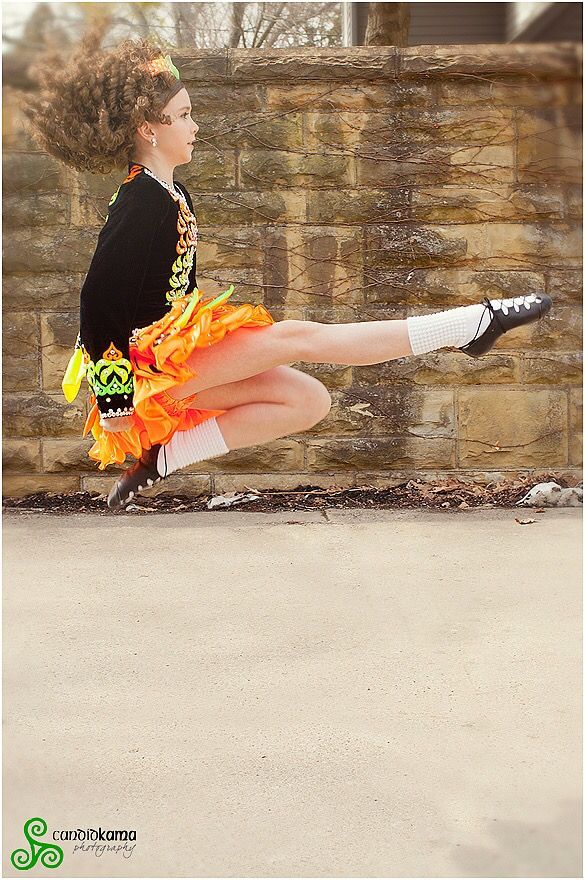 This general statement in our particular case may mean that if the teacher puts on an Irish dance in an ensemble and there is no place for improvisation in this number or in the training program, as a result of such training we will again get only performers of a specific task. And here the point is not only that such an approach does not allow developing creative thinking, fantasy and individuality . Everything is interconnected: if students do not know how to improvise and do not feel the dance and music, but simply mechanically repeat the movements, most likely, the dance will not affect them in any way. That is, with such a thoughtless repetition of , all the character traits described in detail above (freedom, pride, firmness of character, perseverance, thoughtful attitude to what is being done, concentration of attention, contemplation) may not develop.
This general statement in our particular case may mean that if the teacher puts on an Irish dance in an ensemble and there is no place for improvisation in this number or in the training program, as a result of such training we will again get only performers of a specific task. And here the point is not only that such an approach does not allow developing creative thinking, fantasy and individuality . Everything is interconnected: if students do not know how to improvise and do not feel the dance and music, but simply mechanically repeat the movements, most likely, the dance will not affect them in any way. That is, with such a thoughtless repetition of , all the character traits described in detail above (freedom, pride, firmness of character, perseverance, thoughtful attitude to what is being done, concentration of attention, contemplation) may not develop.
Notes:
(1) - famous dancer and stage director. Gained worldwide fame after a resounding success at Eurovision in 1994.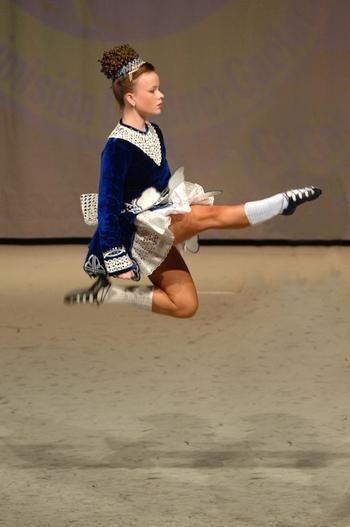 His most famous shows are Riverdance, Lord of the Dance.
His most famous shows are Riverdance, Lord of the Dance.
(2) - famous dancer and director. Danced with M. Flatley, K. Dunn. Show with her participation: Riverdance, Dancing On Dangerous Ground.
List of sources used
Sites of the global information network Internet:
http://celticdance.narod.ru
http://www.irish.ru
http://ailim.h25.ru
Bibliography
3
Rinncidhe Fóirne (Our National Dances) - the official ceili instruction book, 1939.
2. Elizabeth Turner Bell Fifty Figure and Character Dances for Schools, Waverley Book Company, London, 1997
3. Peter Buckman Let's Dance, Paddington Press, 1988
4 Stephen Burke Set Dances for Fun, Leo Publications, 1994
5. Peggy Carty My Irish Dance, Yourman Promotions, 1987
6. Betty Casey International Folk Dancing USA, 1981, Doubleday & Company, Garden City, New York, ISBN 0 385 13308 1
7. Aruba Coghlan 20 Irish Dances, 1994
8.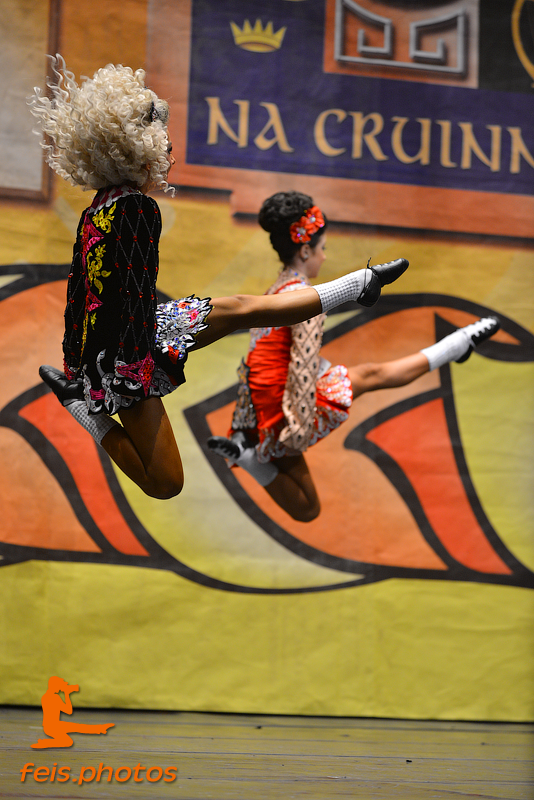 Larry Lynch Set Dances of Ireland, Séadna, 1989, ISBN 0 9514848 0 X (Ireland)
Larry Lynch Set Dances of Ireland, Séadna, 1989, ISBN 0 9514848 0 X (Ireland)
9. Irish Ceili and Set Dances, John J McManus, 1992
10. Irish Dances, Na Píobairí Uilleann, 1984, ISBN 0 9509743 1 5.
11. Joseph O'Hara Irish Set Dance Study Notes
12. Irish Dancing, Harper Collins, 1997, ISBN 0 00 472069 5.
13. A Selection of Irish Traditional Step Dances, Brooks Academy, 1998, ISBN 0 9533637 0 8.
14. Comhaltas Ceoltoiri Éireann and the Gaelic Athletic Association
Coiscéim 1—An authentic guide to Set Dancing, Comhaltas Ceoltoiri Éireann and the Gaelic Athletic Association, 1988
15. Scottish Ceilidh Dancing Ewart, David and Ewart, May, Scottish Ceilidh Dancing, Mainstream Publishing, Edinburgh, 1996. ISBN: 1- 8515-8845-0
16. Traditional Dancing in Scotland Flett, J. P., and Flett, T. M., Traditional Dancing in Scotland, Routledge and Kegan Paul, London, Boston, Melbourne and Henley, 1964. ISBN: 0-7100-1369-8
17. 101 Scottish Country Dances Milligan, Jean C.